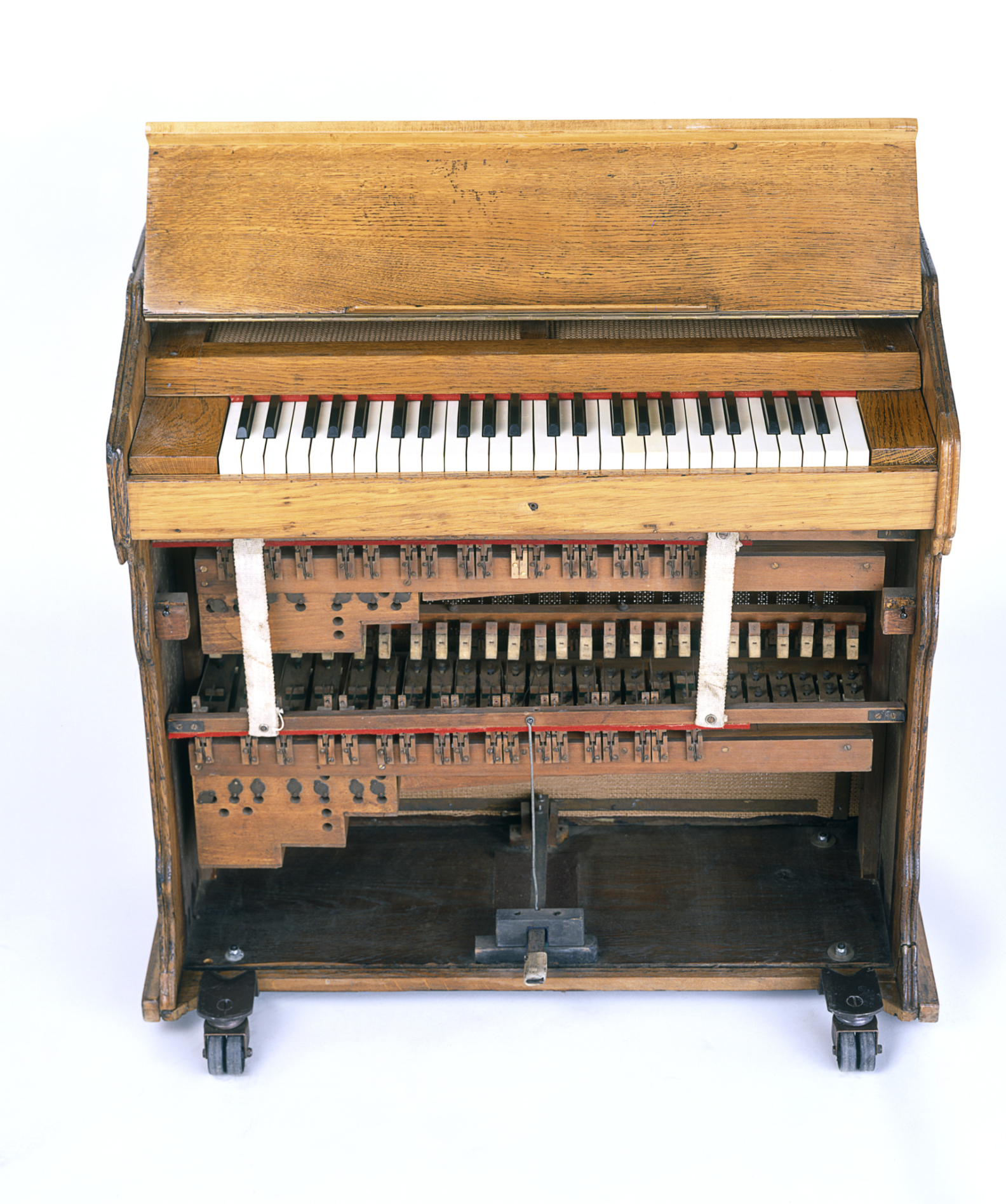Chapter 1. Instruments of the Orchestra
Introduction
Instruments of the Orchestra
What does an oboe look like? What does a viola sound like? This section discusses and illustrates the instruments of Western music that make up the orchestra, and a few others that you will hear in the music for Listen. View an image of each instrument and click on the music excerpt to hear a recording of the instrument played solo. Listening closely will help you begin to recognize the unique timbres and pitch registers of each instrument.
Click the tabs to the right to navigate through the activity.
1.1 Stringed Instruments
Stringed instruments produce their sound by means of taut strings attached to a sound box, a hollow box containing a body of air that resonates (that is, vibrates along with the strings) to amplify the string sound.
Violin
One of the most versatile instruments, the violin excels as a solo instrument but also blends well in ensembles. The violin’s large range covers the soprano register and many much higher pitches. The violin player presses the strings against the neck of the violin to shorten the string length and get different pitches. The strings themselves are usually played with a bow, or sometimes plucked for special effects.
Listen to this instrument.
Music excerpt: Bach, Cantata No. 156, “Arioso”

Viola
The viola plays in the alto and tenor range, lower than the soprano range of the violin. Its lowest range has a throaty quality, while its highest register is powerful and intense. The image here shows the difference in size between the violin on the left and the viola on the right; the viola is larger by several inches.
Listen to this instrument.
Music excerpt: Bach, Cello Suite No. 5 in C Minor, Prelude

Cello
The cello can function as either the tenor or the bass of the violin family, and it is a favorite solo instrument. The cello has a rich, gorgeous sound in its low register. Cellists play seated, with the instrument propped on the floor between their knees.
Listen to this instrument.
Music excerpt: Kodály, Sonata for Solo Cello, Op. 8

Double Bass
Played with a bow, the double bass (also called string bass or just bass) provides a splendid, deep support for orchestral sound. It is often (in jazz, nearly always) plucked to give an especially vibrant kind of accent and to emphasize the meter.
Listen to this instrument.
Music excerpt: Koussevitzky, Concerto for Double Bass and Orchestra, I
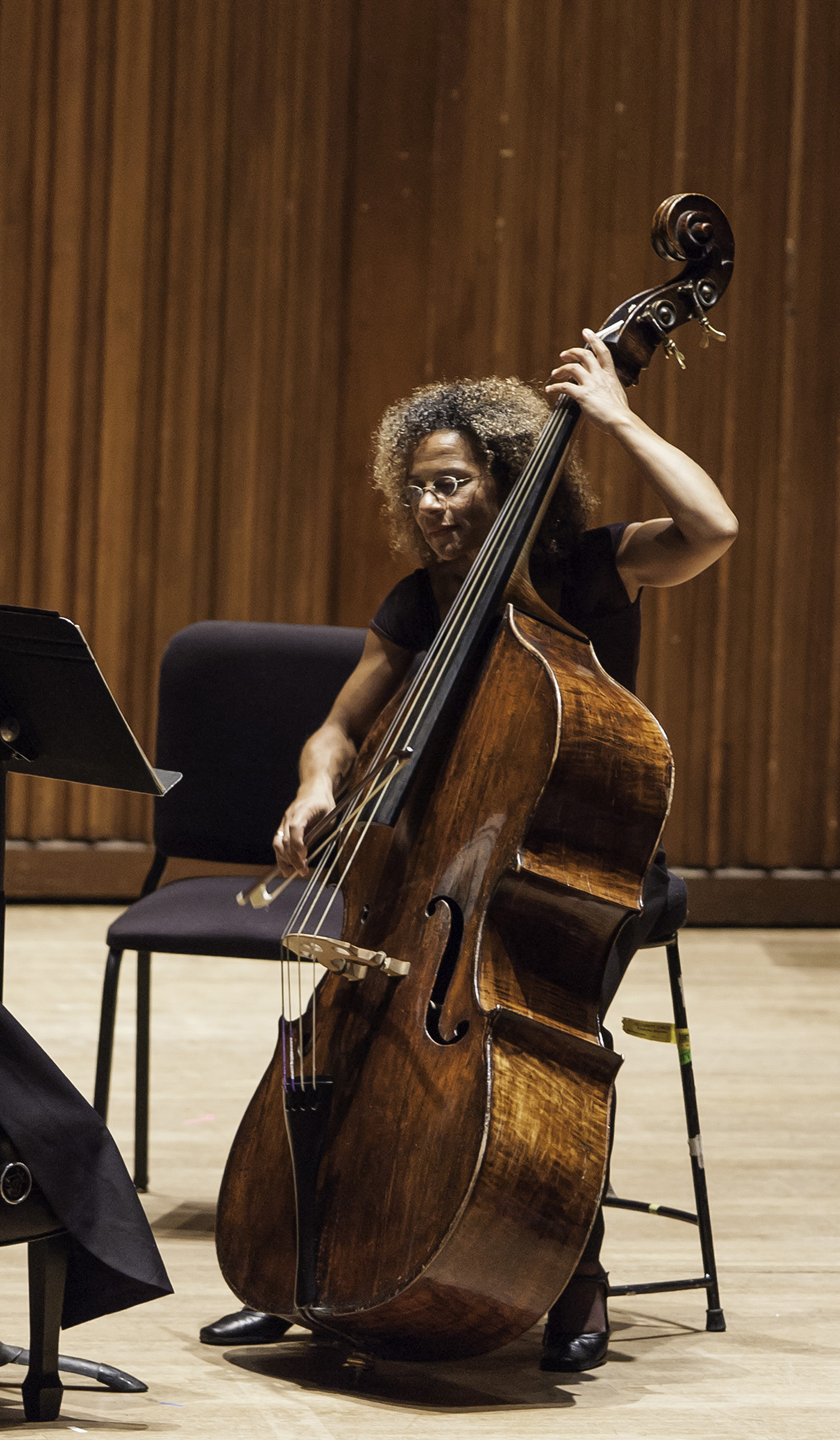
Harp
A large instrument with forty-
Listen to this instrument.
Music excerpt: Tchaikovsky, The Nutcracker Suite, “Waltz of the Flowers”
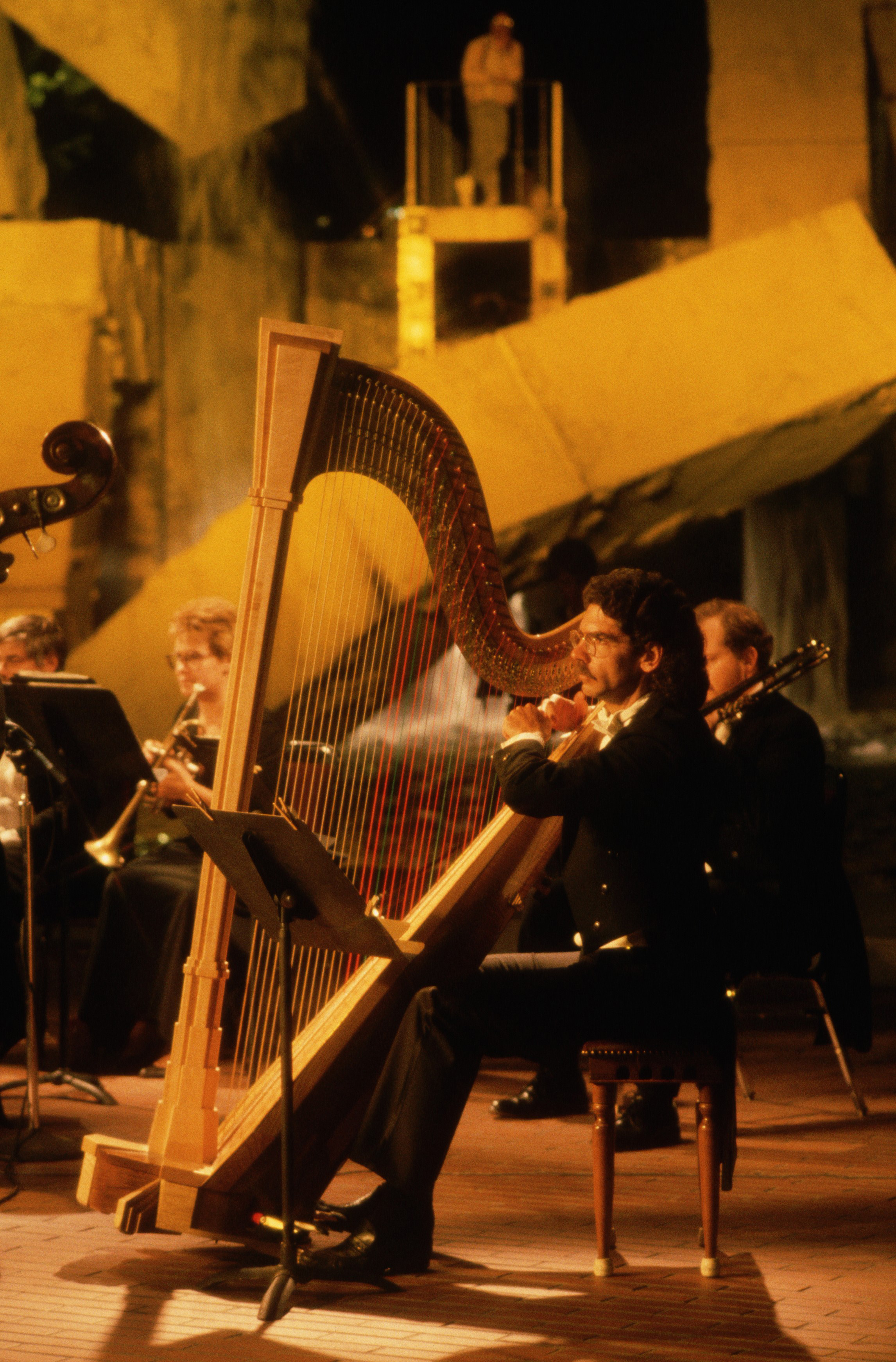
Woodwind Instruments
In woodwind instruments, sounds are created by setting up vibrations in the column of air in a tube. The tube may be made of wood, metal, or even plastic. Players use levers or their fingers to open and close holes in the tube, producing different pitches.
Flute
The most agile of the woodwind instruments and also the gentlest, the flute stands out clearly in the orchestra when played in its high register. The player holds the flute horizontally and blows across a hole on the side to produce sound.
Listen to this instrument.
Music excerpt: Telemann, Suite in A Minor, IV

Piccolo
Smaller than the flute and playing in a higher range, the piccolo adds special sparkle to band and orchestral music.
Listen to this instrument.
Music excerpt: Telemann, Suite in A Minor, VI

Clarinet
Like the human voice, the clarinet’s sound is rich and flexible and ranges from warm, mellow tones to strident, shrill ones. To create sound, the clarinet player blows on a reed fitted on the mouthpiece to vibrate the air within the clarinet’s tube. The pitch range is approximately the same as that of the flute.
Listen to this instrument.
Music excerpt: Mozart, Concerto for Clarinet and Orchestra in A Major, II
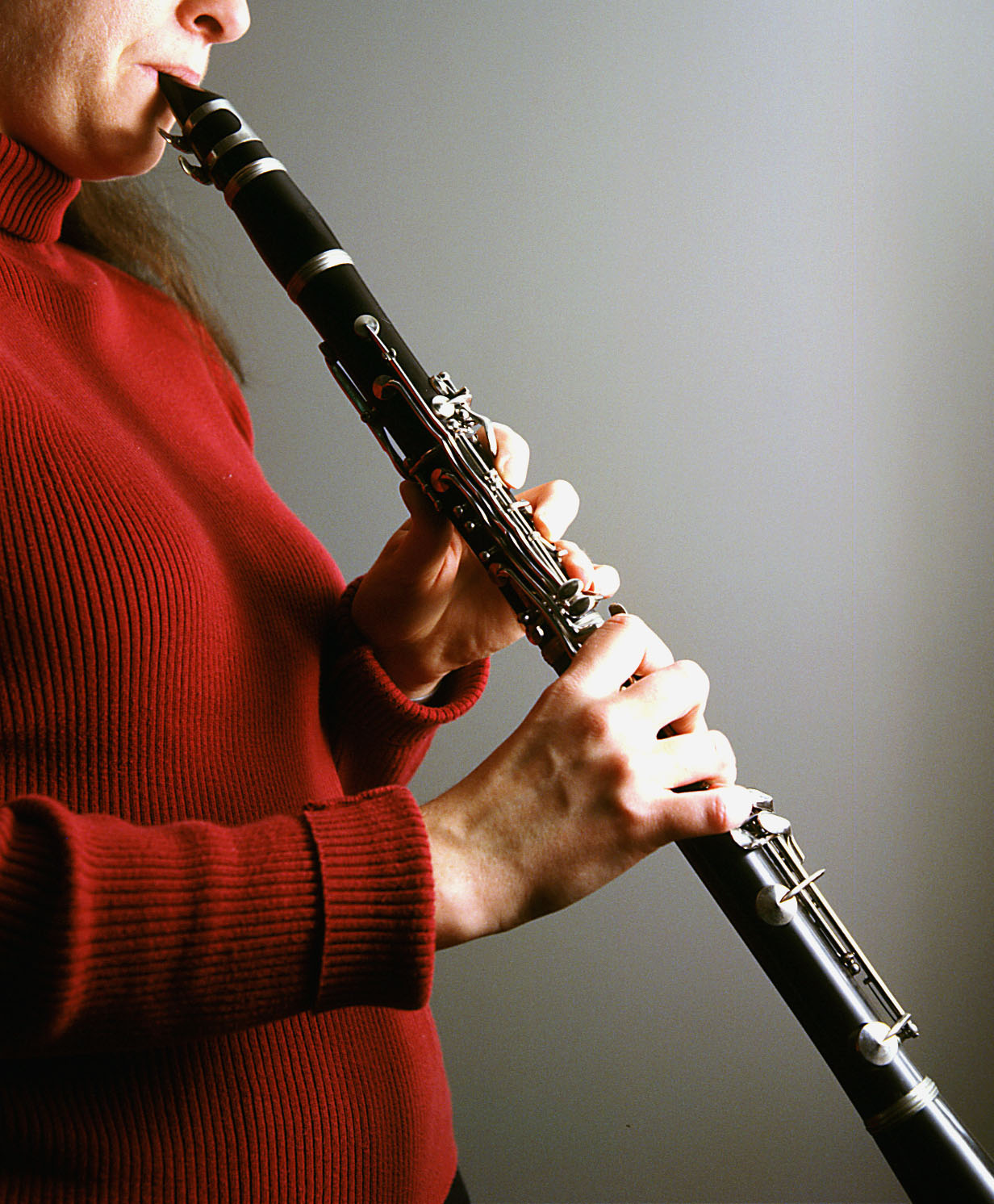
Oboe
The oboe’s characteristic crisp, clean, and sometimes plaintive sound is created by its double reed—
Listen to this instrument.
Music excerpt: Richard Strauss, Don Juan

English Horn
A larger, lower oboe, the English horn descends into the same range as the viola.
Listen to this instrument.
Music excerpt: Respighi, The Pines of Rome
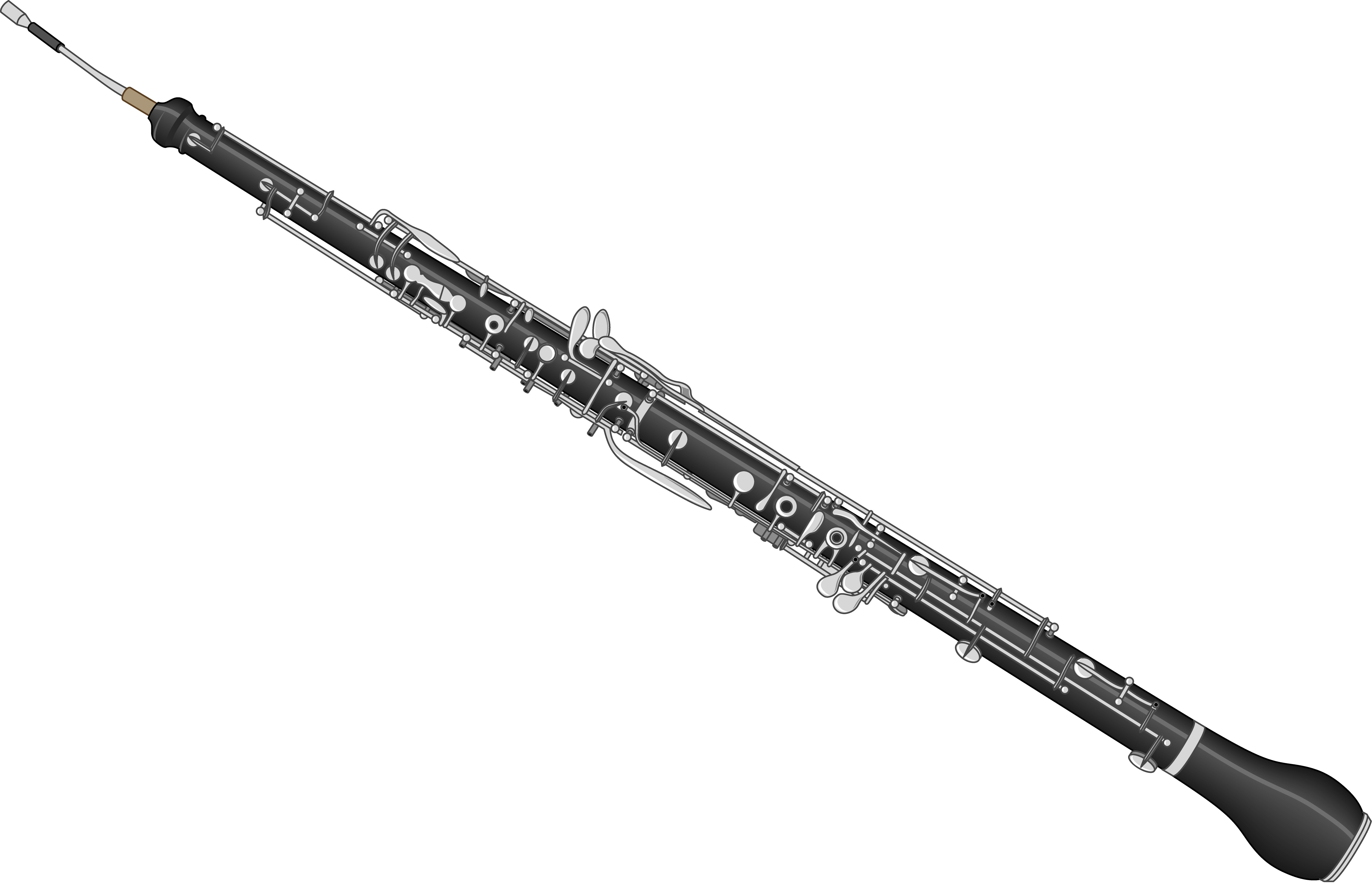
Bassoon
The bassoon, like the oboe, uses a double reed, but its much longer tube produces a lower pitch range, approximately the same as that of a cello. Its expression ranges from the mournful to the comical.
Listen to this instrument.
Music excerpt: Mozart, Bassoon Concerto in B-

Brass Instruments
All brass instruments have long metal tubes, and these are almost always coiled in one way or another. Sound is produced by the player’s lips vibrating against a small cup-
Trumpet
The highest of the main brass instruments, the trumpet has a bright, strong, piercing tone that provides the ultimate excitement in band and orchestral music alike. Trumpet players control the pitch with three pistons, or valves, that connect auxiliary tubes with the main tube, lengthening or shortening the vibrating air column inside.
Listen to this instrument.
Music excerpt: Jeremiah Clarke, Trumpet Voluntary
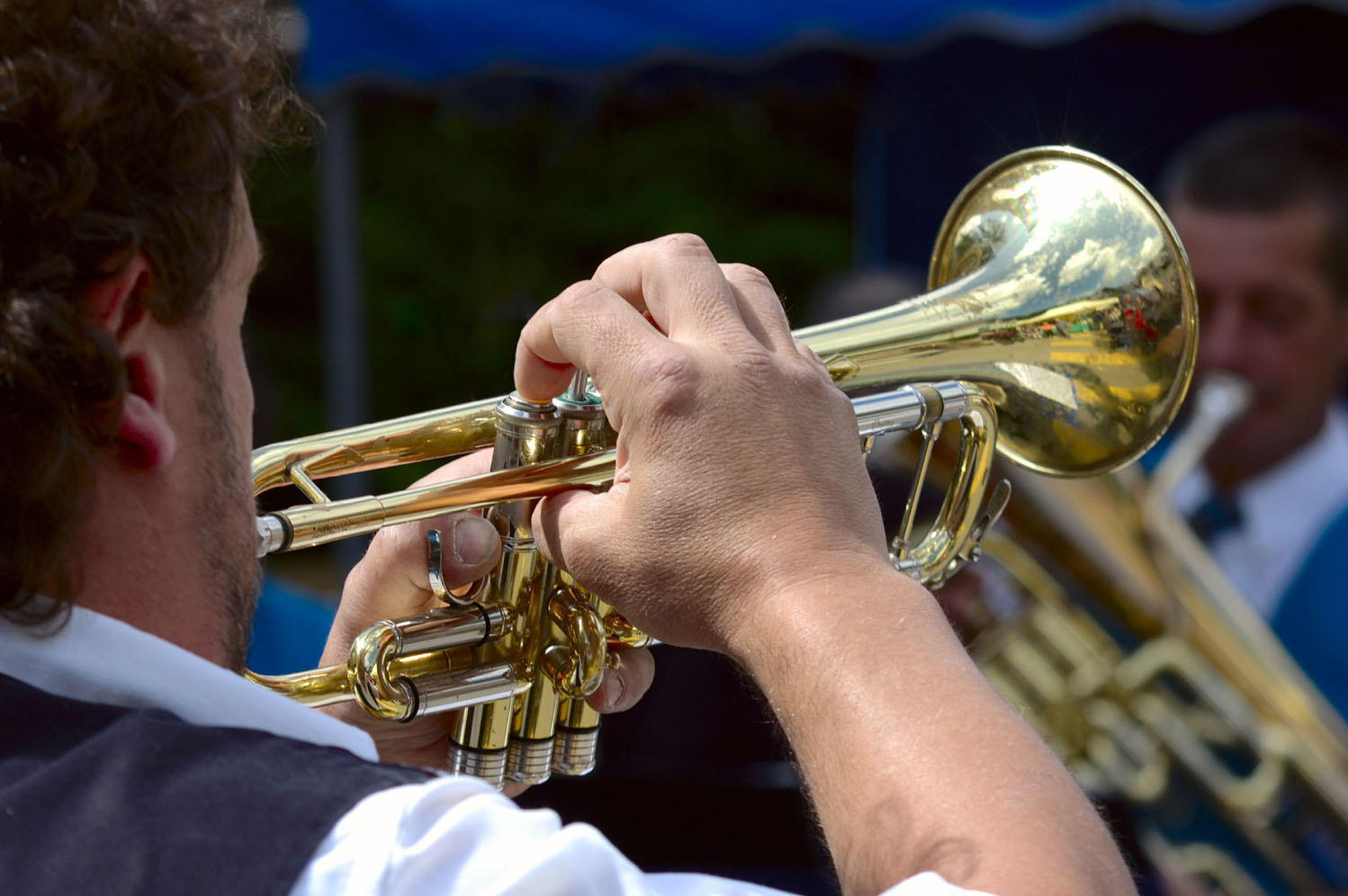
French Horn
With a lower, mellower, thicker tone than the trumpet, the French horn is capable of mysterious, romantic sounds when played softly; when played loudly, it can sound like a trombone. Like the trumpet, the French horn has pistons, or valves, for controlling pitch.
Listen to this instrument.
Music excerpt: Mozart, Concerto No. 4 for French Horn in E-
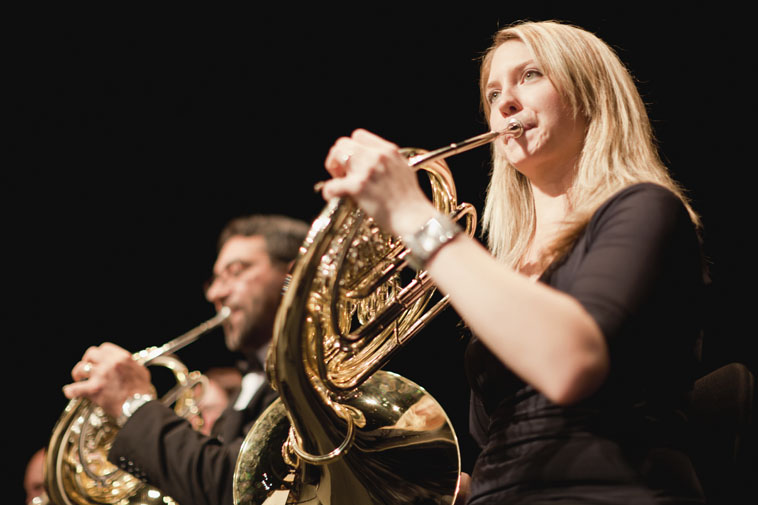
Trombone
Less bright and martial in tone than the trumpet, the trombone can produce a surprising variety of sounds, ranging from an almost vocal quality in its high register to a hard, powerful blare in its low register. Unlike other brass instruments fitted with valves or pistons, the trombone has a sliding mechanism for lengthening and shortening the tube to control pitch.
Listen to this instrument.
Music excerpt: Ravel, Boléro

Tuba
The tuba is a deep bass instrument. Its sound is less flexible than that of the other brass instruments, so it is not favored for solo work. Instead, it is typically used as a foundation for the trombone group in an orchestra.
Listen to this instrument.
Music excerpt: Wagner, Der Ring des Nibelungen, “Ride of the Valkyries”

Percussion Instruments
Percussion instruments produce sound by being struck or sometimes rattled. Pitched percussion instruments are scale instruments, capable of playing melodies. The glockenspiel, xylophone, marimba, vibraphone, and chimes fit in this category. Unpitched percussion instruments, such as the cymbals, triangle, and tam-
Timpani
The most widely used percussion instrument in the orchestra, the timpani are large kettle-
Listen to this instrument.
Music excerpt: Berlioz, Fantastic Symphony, V
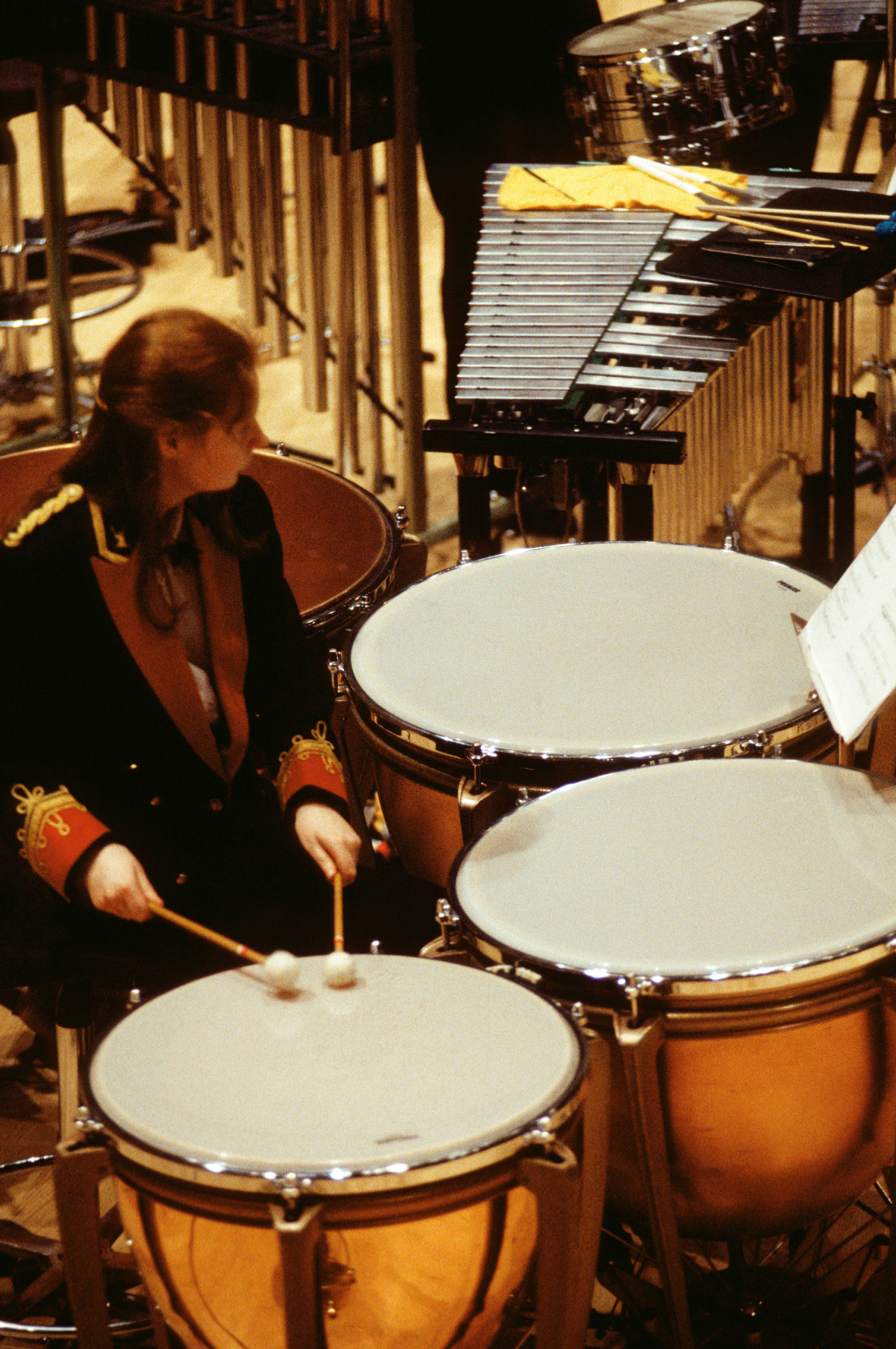
Glockenspiel
The glockenspiel has small steel bars and is capable of playing melodies. It is a high-
Listen to this instrument.
Music excerpt: Mozart, Magic Flute, Act 1
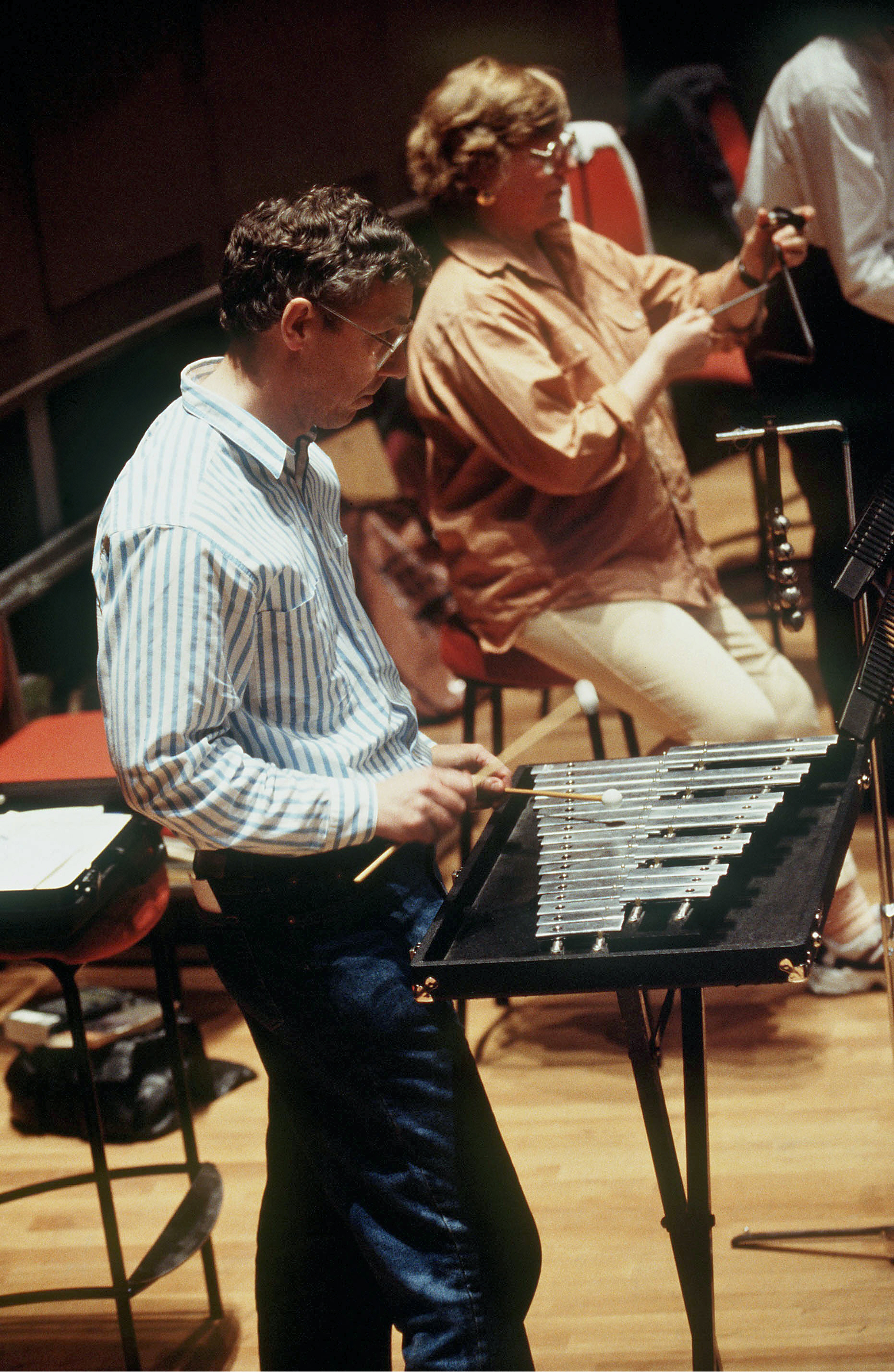
Xylophone
The xylophone is constructed of hardwood or synthetic bars positioned over resonating tubes and is capable of playing melodies. A standard range is three and a half octaves, but there are exceptions. It has a dry, bright sound that is capable of penetrating through the largest of orchestras.
Listen to this instrument.
Music excerpt: George Gershwin, Porgy and Bess, “Catfish Row”
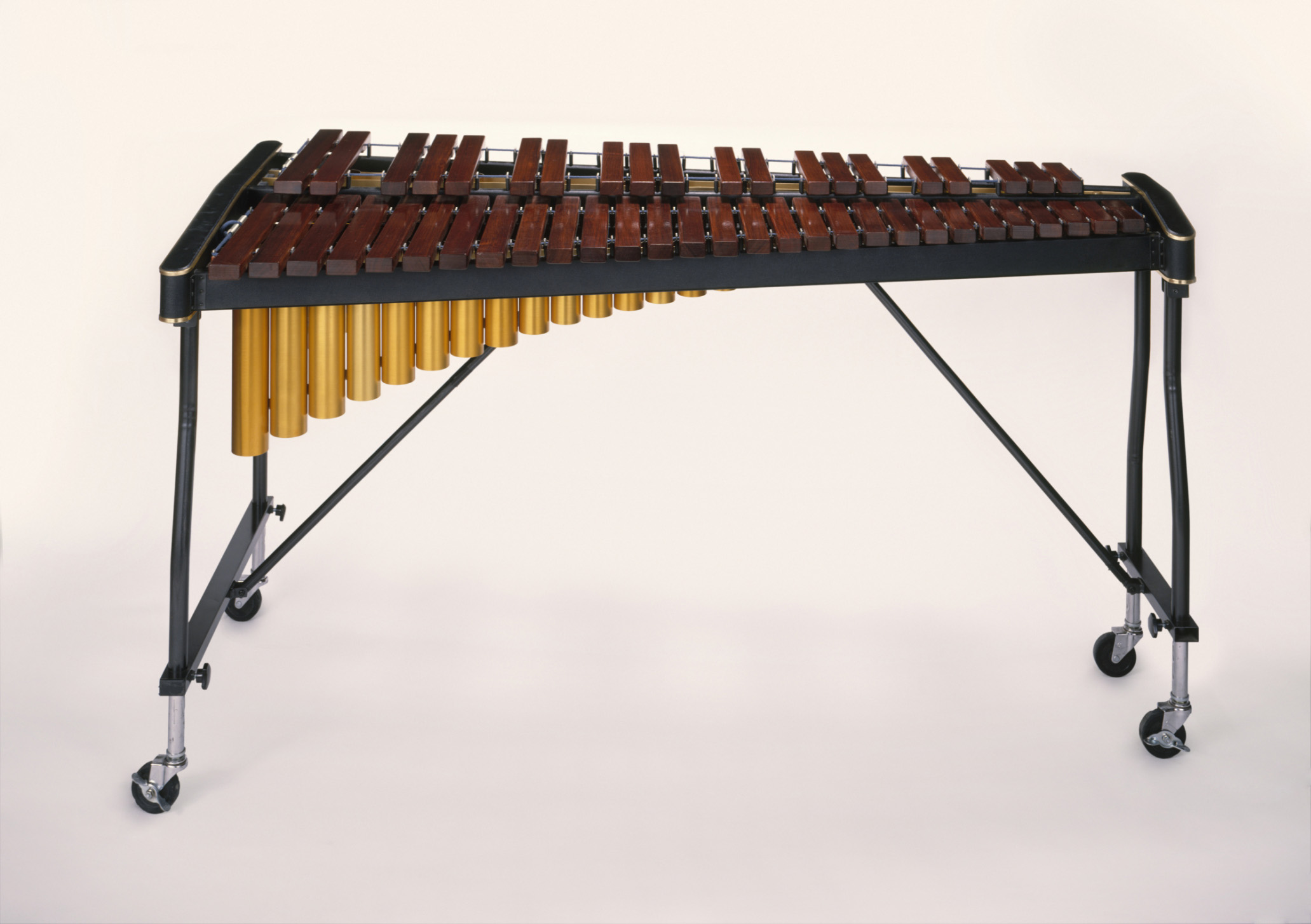
Marimba
An instrument with African and South American origins, the contemporary concert marimba is a xylophone-
Listen to this instrument.
Music excerpt: Bach, Partita for Solo Violin No. 1 in B Minor, “Bourée”
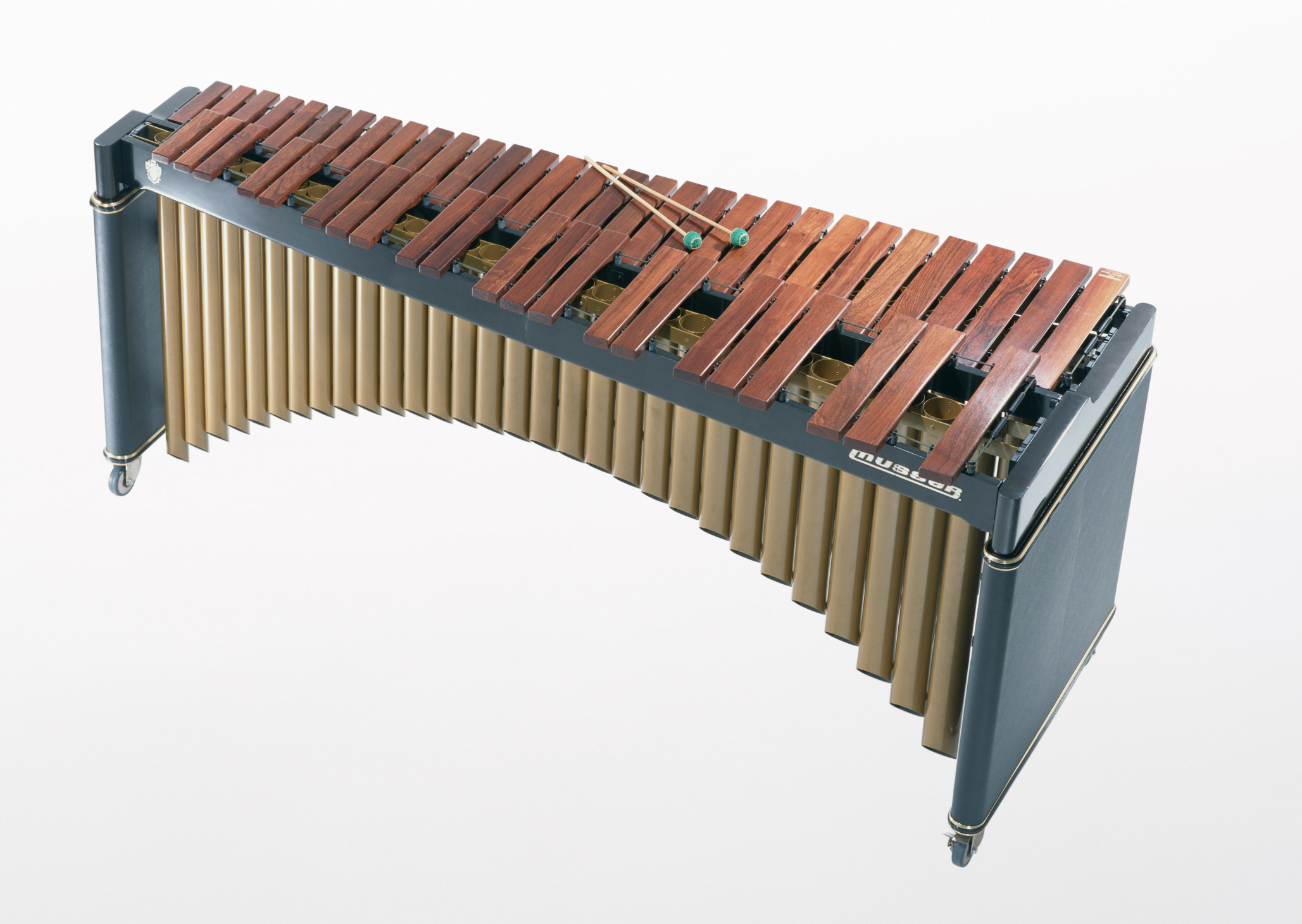
Vibraphone
The vibraphone (also known as vibes) has metal bars. Like the piano, it has a damper pedal that makes it possible to sustain pitches. It also has the ability to produce a vibrato sound.
Listen to this instrument.
Music excerpt: Bach, Cello Suite No. 3 in C Major, “Gigue”
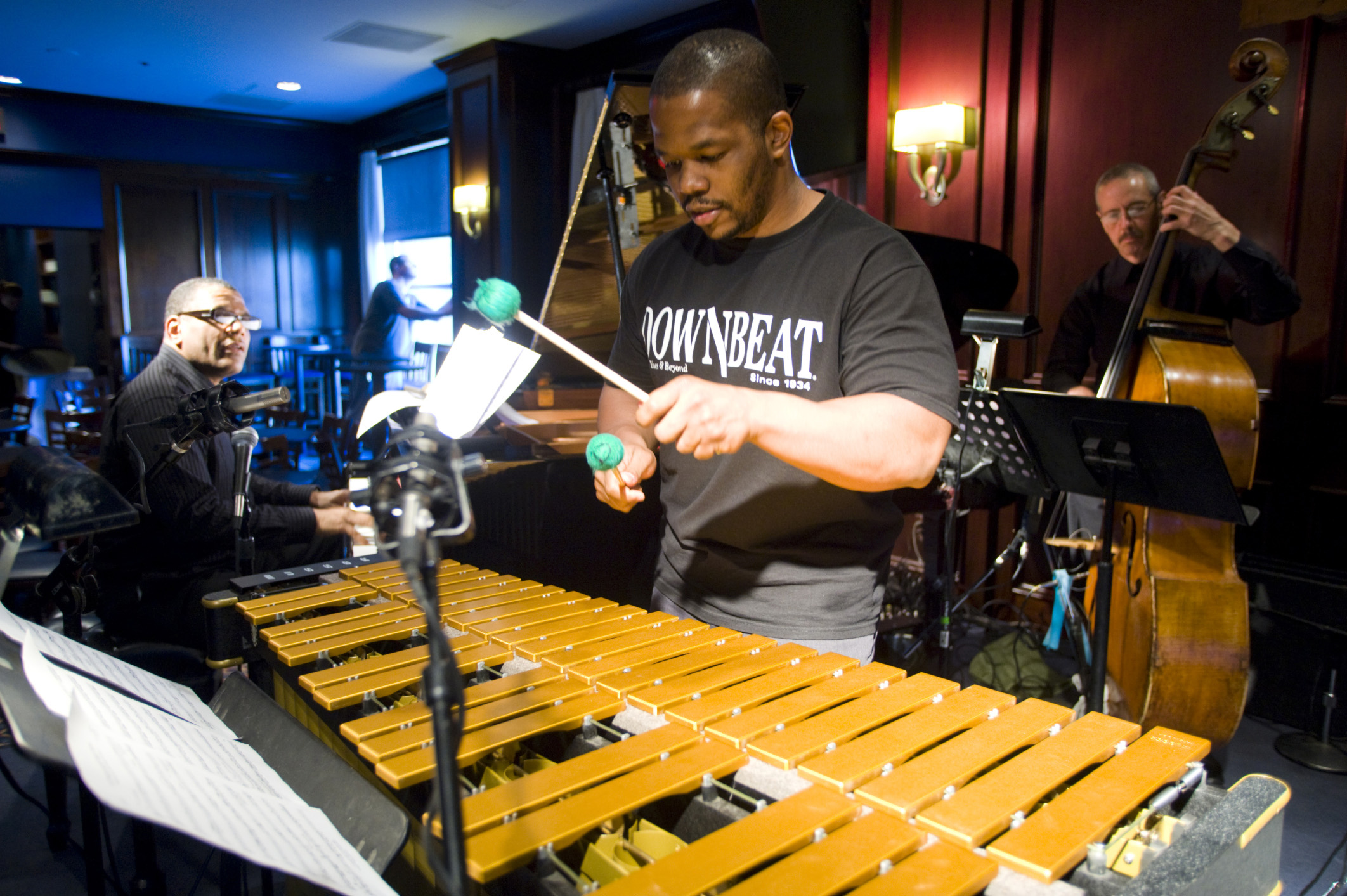
Chimes
Chimes (also called tubular bells) are hanging metal tubes that are struck with a rawhide or synthetic hammer. They sound like church bells and can be used to play melodies.
Listen to this instrument.
Music excerpt: Percy Grainger, Lincolnshire Posy, VI, “The Lost Lady Found”
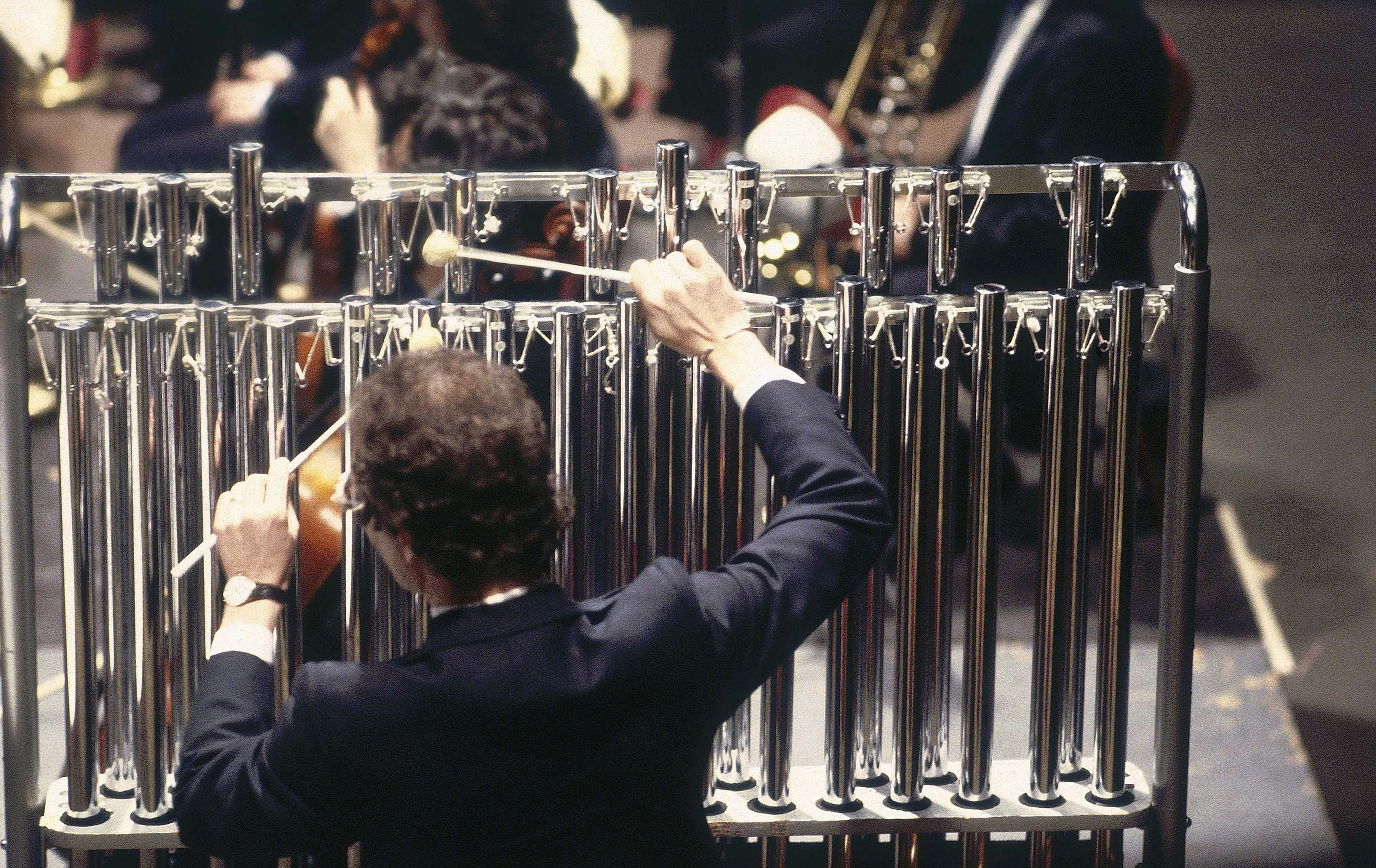
Percussion Instruments (continued)
Percussion instruments produce sound by being struck or sometimes rattled. Unpitched percussion instruments, such as the cymbals, triangle, and tam-
Cymbals
Cymbals are concave metal plates ranging from a few inches to several feet in diameter. In orchestral music, pairs of large cymbals are clapped together to support climactic moments in the music with a grand crashing sound. A single cymbal may also be suspended and played with a stick or mallet for a variety of other sounds.
Listen to this instrument.
Music excerpt: Tchaikovsky, Symphony No. 4, IV

Triangle
The triangle is made from a metal alloy and either provides a shimmery, repeated tinkling or adds sparkle to a melody.
Listen to this instrument.
Music excerpt: Rimsky-

Tam-
The tam-
Listen to this instrument.
Music excerpt: Stravinsky, The Rite of Spring, “Procession of the Wise Elder”
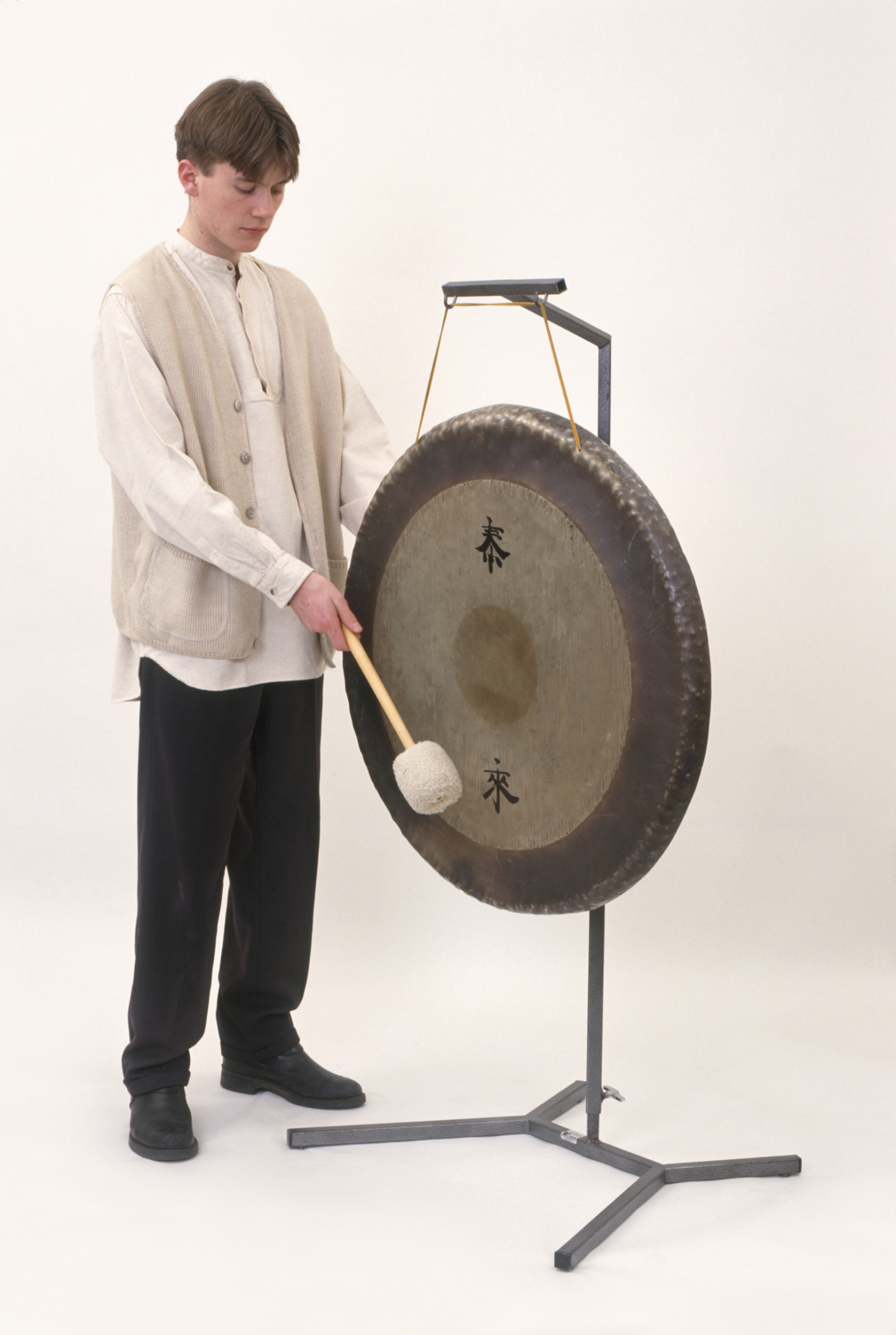
Snare Drum
The snare drum is a small unpitched percussion instrument. The snares—
Listen to this instrument.
Music excerpt: Ravel, Boléro
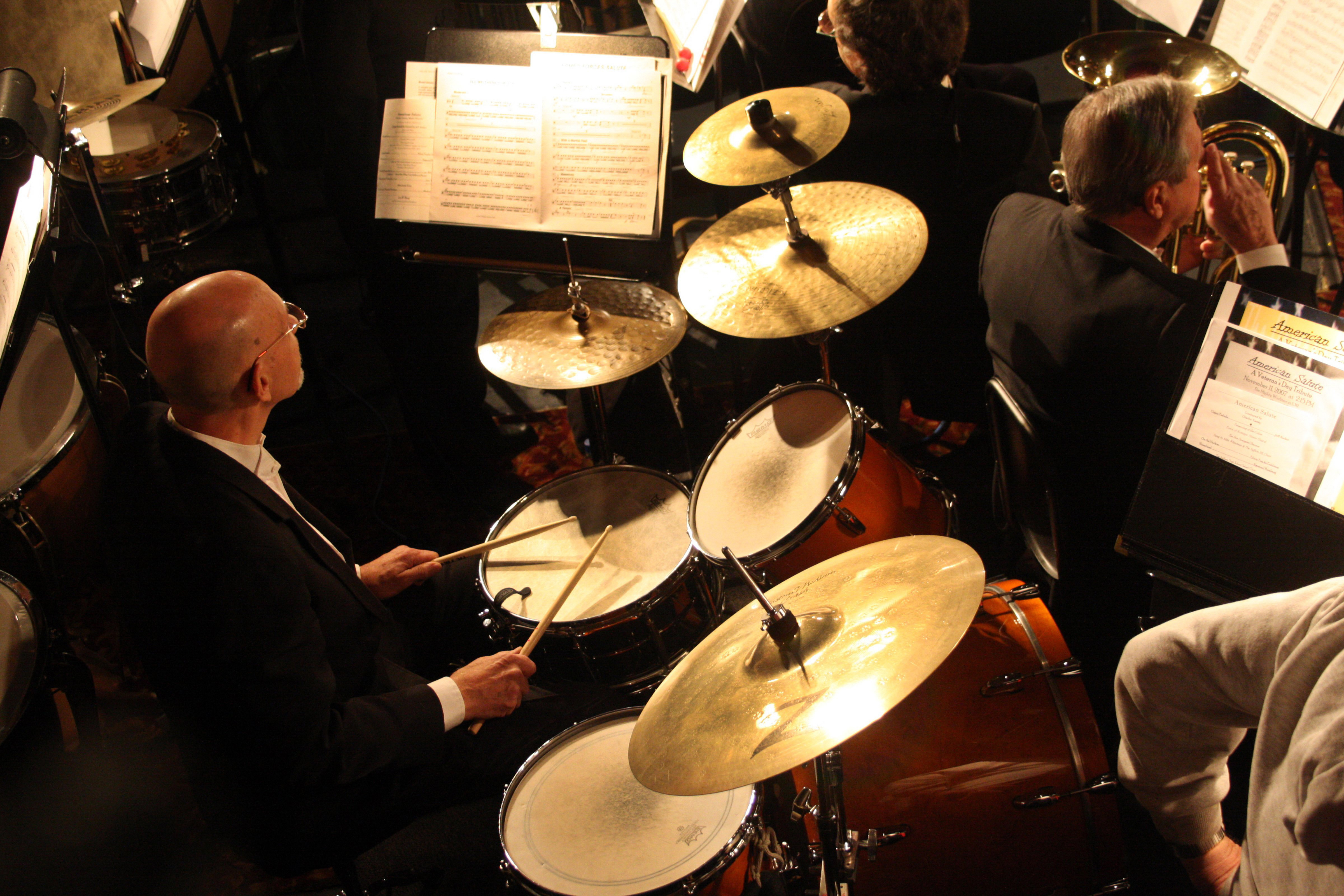
Bass Drum
The bass drum is the largest unpitched drum used in the orchestra. It has two heads and is normally mounted on a tilting stand for orchestral use. Percussionists use large, soft mallets to play the bass drum.
Listen to this instrument.
Music excerpt: Stravinsky, The Rite of Spring, “Dance of the Earth”

Keyboard Instruments
Keyboard instruments have strings, pipes, or bars that are activated from a keyboard. A great advantage of these instruments is that they can play more than one note at a time. A soloist can play an entire piece on a keyboard instrument without requiring any other musicians at all, so a great body of solo work has been written for piano, harpsichord, and organ. However, most orchestras today include a piano, and in earlier times they regularly included a harpsichord.
Piano
The piano’s sound is produced by felt-
Listen to this instrument.
Music excerpt: Chopin, Prelude in E Minor, Op. 28, No. 14

Harpsichord
A keyboard instrument dating back to the end of the Middle Ages, the harpsichord enjoyed a healthy revival in the twentieth century for the playing of Baroque music. Like the piano, the harpsichord has a set of tuned strings activated from a keyboard. Instead of hammers striking the strings, a plectrum plucks the strings, giving the harpsichord’s sound a brilliant quality.
Listen to this instrument.
Music excerpt: Bach, Partita No. 4 in D Major, “Aria”

Organ
The pipe organ has many sets of tuned pipes through which a complex wind system blows air, activated by a keyboard, which is known as a manual. The pipes have different tone colors; a large organ is capable of an almost orchestral variety of sounds. Most organs have more than one manual to control different sets of pipes. A pedal board—
Listen to this instrument.
Music excerpt: Bach, Toccata in D Minor

Celesta
The celesta resembles a miniature upright piano, and like a piano, it has hammers activated by a keyboard. But the hammers strike steel bars, not strings, producing a delicate, silvery sound.
Listen to this instrument.
Music excerpt: Tchaikovsky, The Nutcracker Suite, “Dance of the Sugar Plum Fairy”
